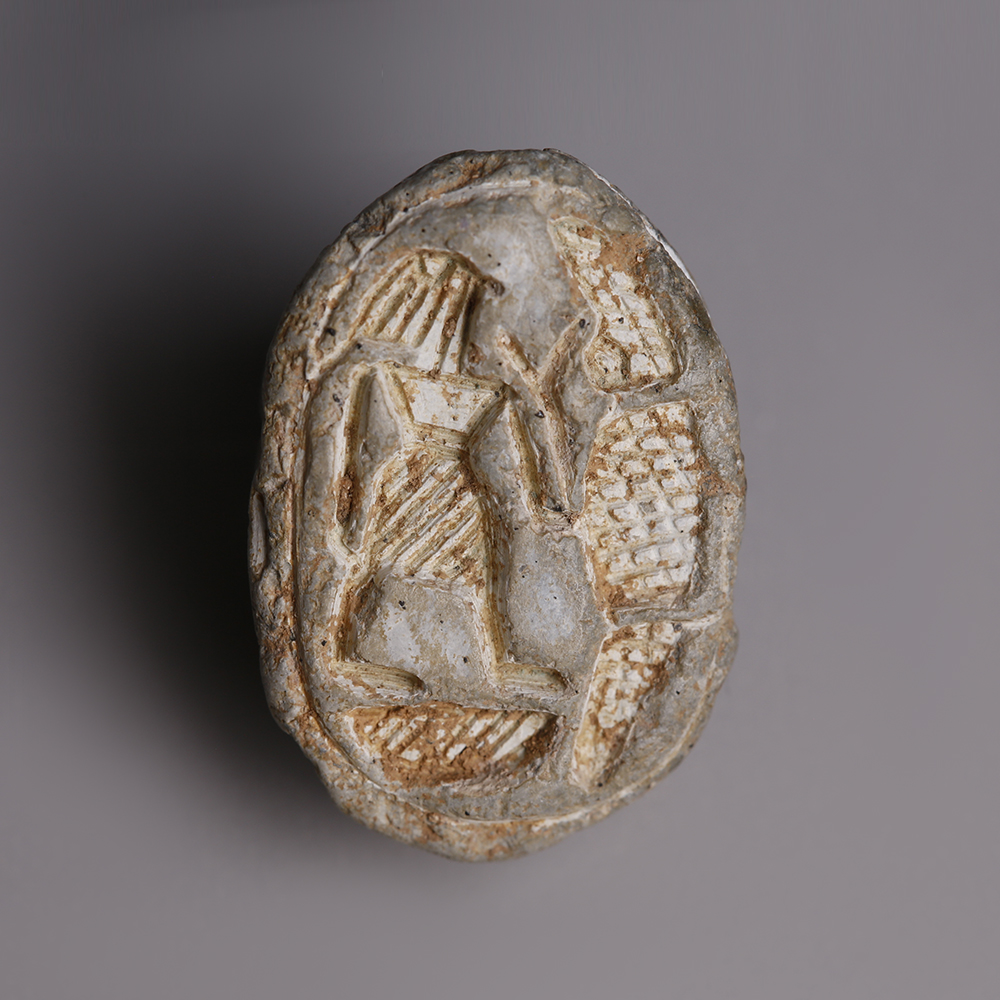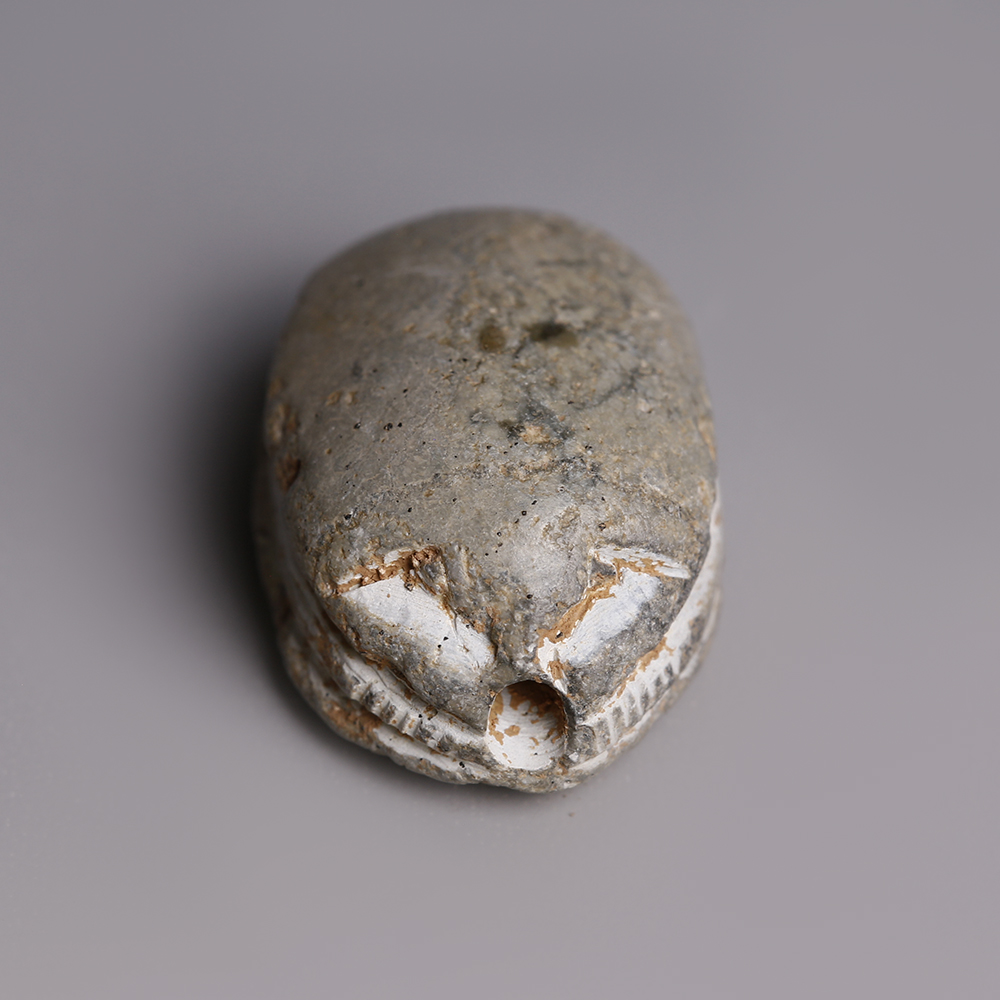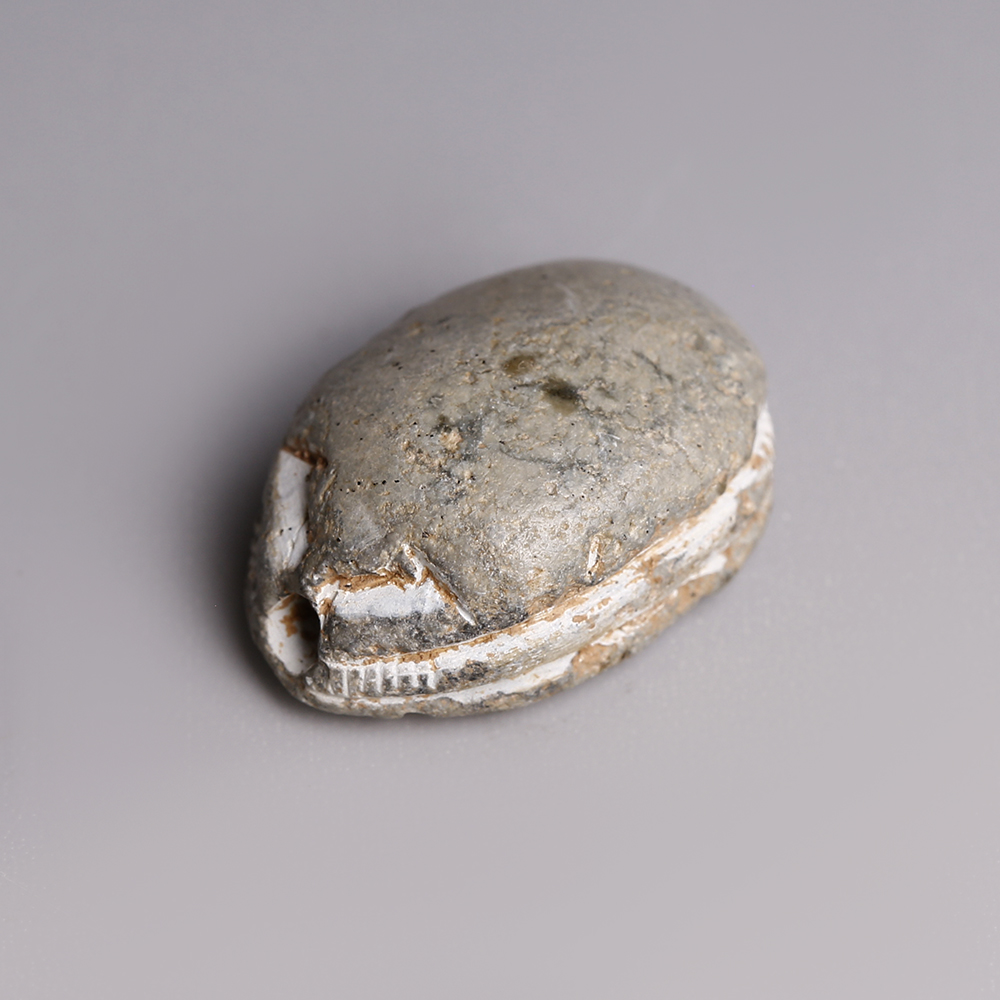This scarab is typical of those made during the Hyksos Period. The term ‘Hyksos’ can be traced back to the Egyptian expression ‘heka khasewet’, which means, “rulers of foreign lands”. The Hyksos of the fifteenth Dynasty of Egypt, ruling during the Second Intermediate Period, were thus of non-Egyptian origin. They were probably Canaanite, and one tends to find the names of rulers on their scarabs. The Hyksos Kingdom was centred in the eastern Nile Delta and Middle Egypt. It was limited in size, never extending south into Upper Egypt, and it had Memphis as its capital.
The falcon headed figure represented is most likely the god Horus. Horus was depicted as two deities; Horus the Elder and Horus the Younger. Horus the Elder was considered god of the sky and the son of Geb, Earth and Nut, Sky. As a god he was associated with both the sun and the moon. Horus the Younger was the son of Osiris and Isis, he too was associated with the sky, sun and the moon. He was the protector of Egypt’s royalty and defender of order, uniter of the two lands (lower and upper Egypt). Over time, both Horus deities were merged with Ra, the sun god, and represented as a falcon headed man bearing the sun disk and the crown of upper and lower Egypt.
To find out more about Ancient Egyptian amulets please see our relevant blog post: Egyptian Amulets and their Meanings.


